I Got A Popular Skincare Laser Treatment And It Went Badly — The Stories You DON'T Hear But Sadly Do Happen
Hi, I'm Krista, and — as a woman in her 30s — I've unfortunately allowed society to instill in me an unhealthy mindset when it comes to my skin and aging. (Sorry, I am pretty sure I have food in my mouth in the below pic.)
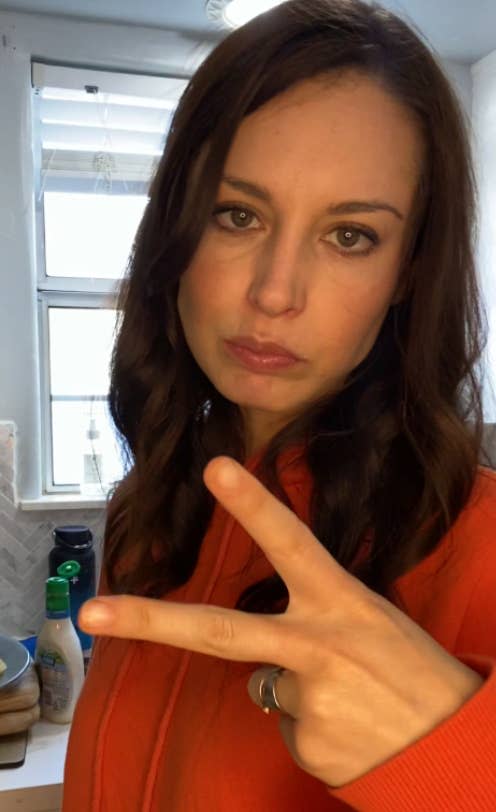
Because of this, I have gone back and forth with the idea of getting botox, fillers, and much more. I'm at the age where women continuously tell me, "Girl, it's time" when I tell them I haven't gotten botox yet. Anyway, It's hard to admit how mean I truly have been to myself in terms of aging and my face, especially recently.
So, in January, I got a CO2 CoolPeel® laser treatment which, among other things, is supposed to help soften wrinkles and create a more even skin tone and texture. I convinced myself I needed this — and the harsh lights of restaurant bathrooms made me even more sure that I was in dire need of this procedure.
CW
So, I got the treatment, and it hurt like hell — the aesthetician said I wouldn't need numbing cream, but I wish I would have requested it. Anyway, the procedure took about 10 minutes and was considered "successful." Redness is expected afterward, and this is exactly what I experienced:
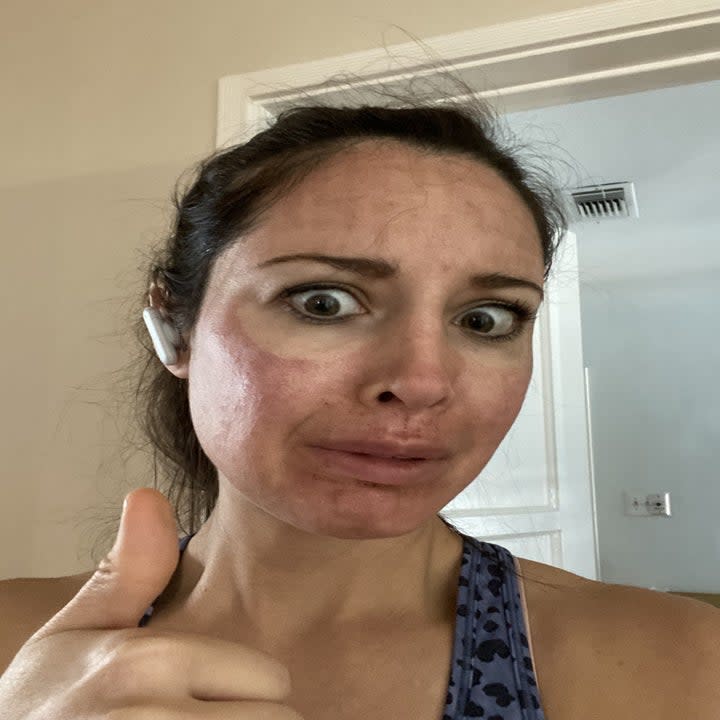
I was told that the redness would subside after 24-48 hours, but after one week, the redness was still there:
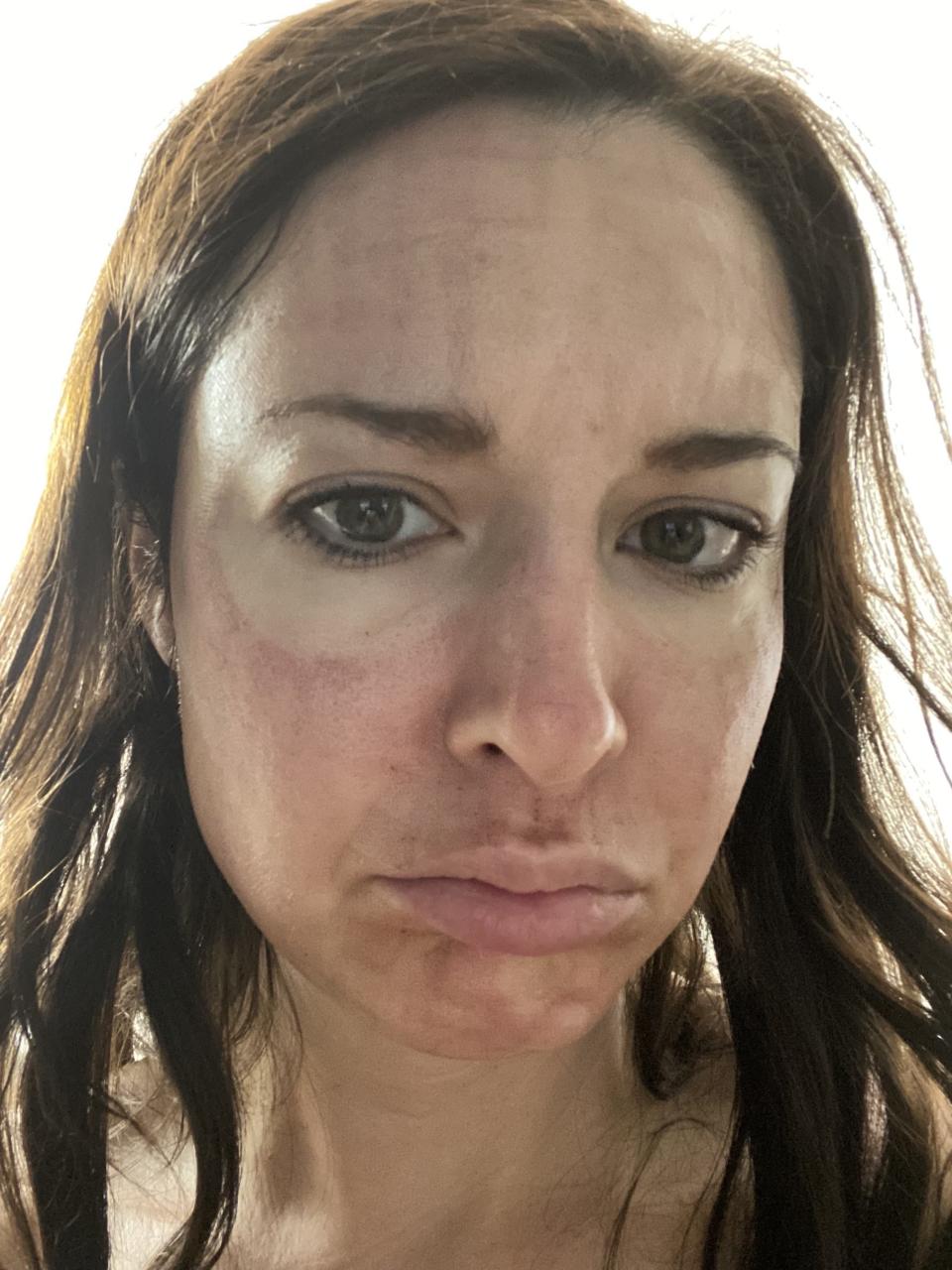
CO2 lasers can take up to two weeks to heal, but the majority of people are completely healed within one to five days.
I tried to remain calm and let another week go by...and then another...and then another. The redness began developing into patchy areas throughout my face:
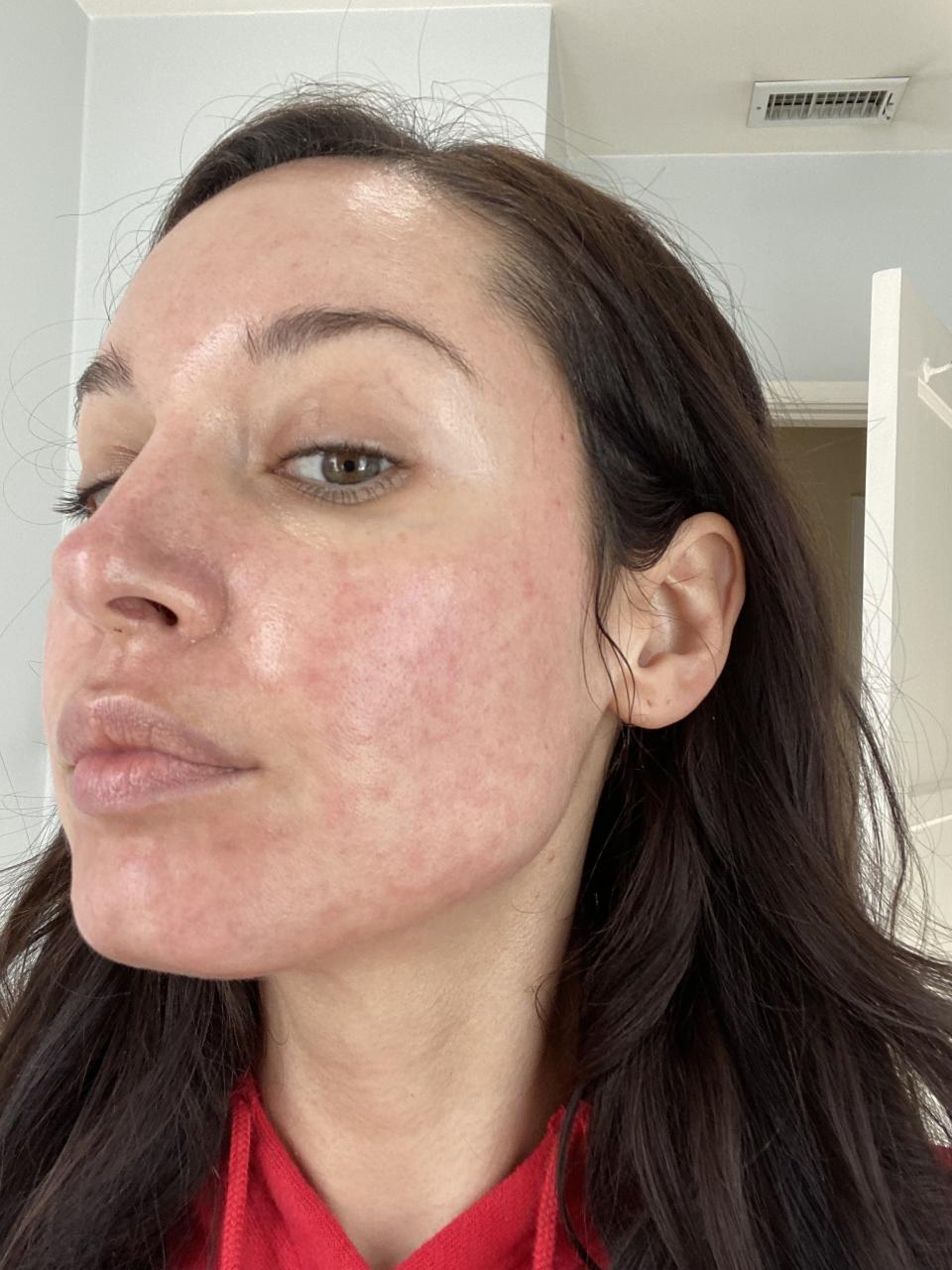
My doctor pretty much dismissed what I was experiencing and told me that my skin was having a more sensitive reaction (they said a referral to a dermatologist wasn't necessary just yet). I was told to continue using the Cetaphil gentle cleanser and give it more time to heal.
After over a month, the redness wasn't as bad, but I then slowly started developing some discoloration and small bumps on my face:
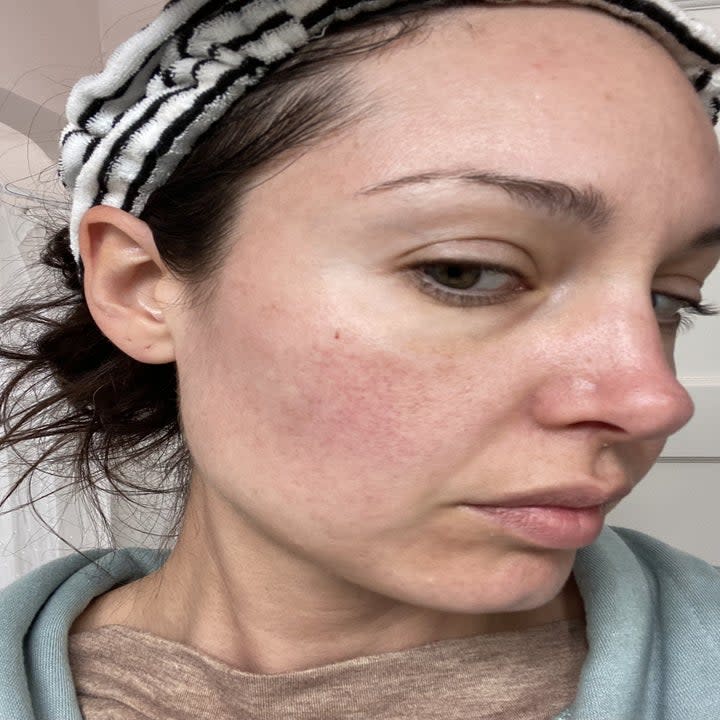
My skincare routine consisted of cleansing with Cetaphil and applying basic moisturizer + SPF — and of course, staying out of the sun.
I know this is different lighting, but the pic on the left was what my skin looked like before the procedure for reference:
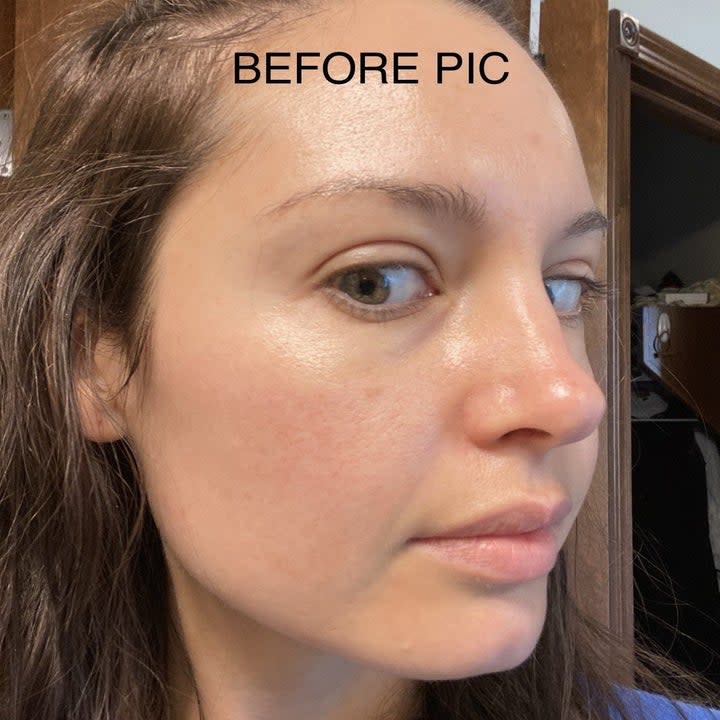
This is when I decided I had waited long enough. I went back to the place where I had the procedure done and was informed that I developed hyperpigmentation. They prescribed me a low percentage of hydroquinone to dab on areas where there was discoloration.
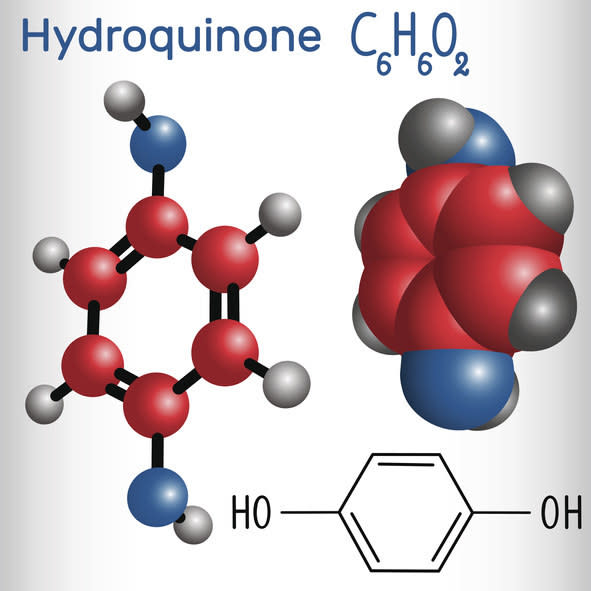
Hydroquinone is a prescription-only bleaching treatment that is said to be the “gold standard” when it comes to fading melasma and hyperpigmentation.
After using the medication for a few weeks in the areas where the hyperpigmentation had manifested, I was happy to see that it was working to fade some of the discoloration...
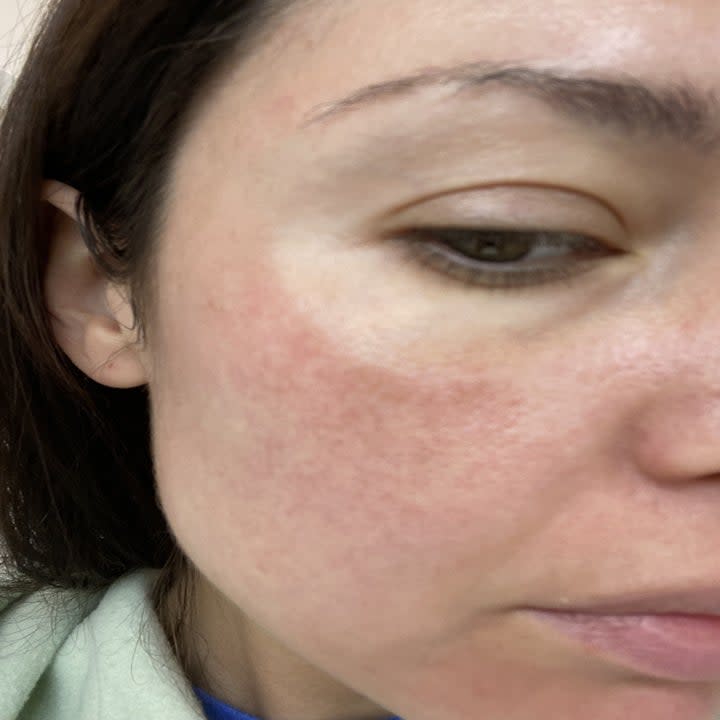
However, it aggravated my skin and started making other spots of hyperpigmentation even worse than before, so I stopped. (I also was still dealing with the bumps which seemed to be getting worse at this point.)
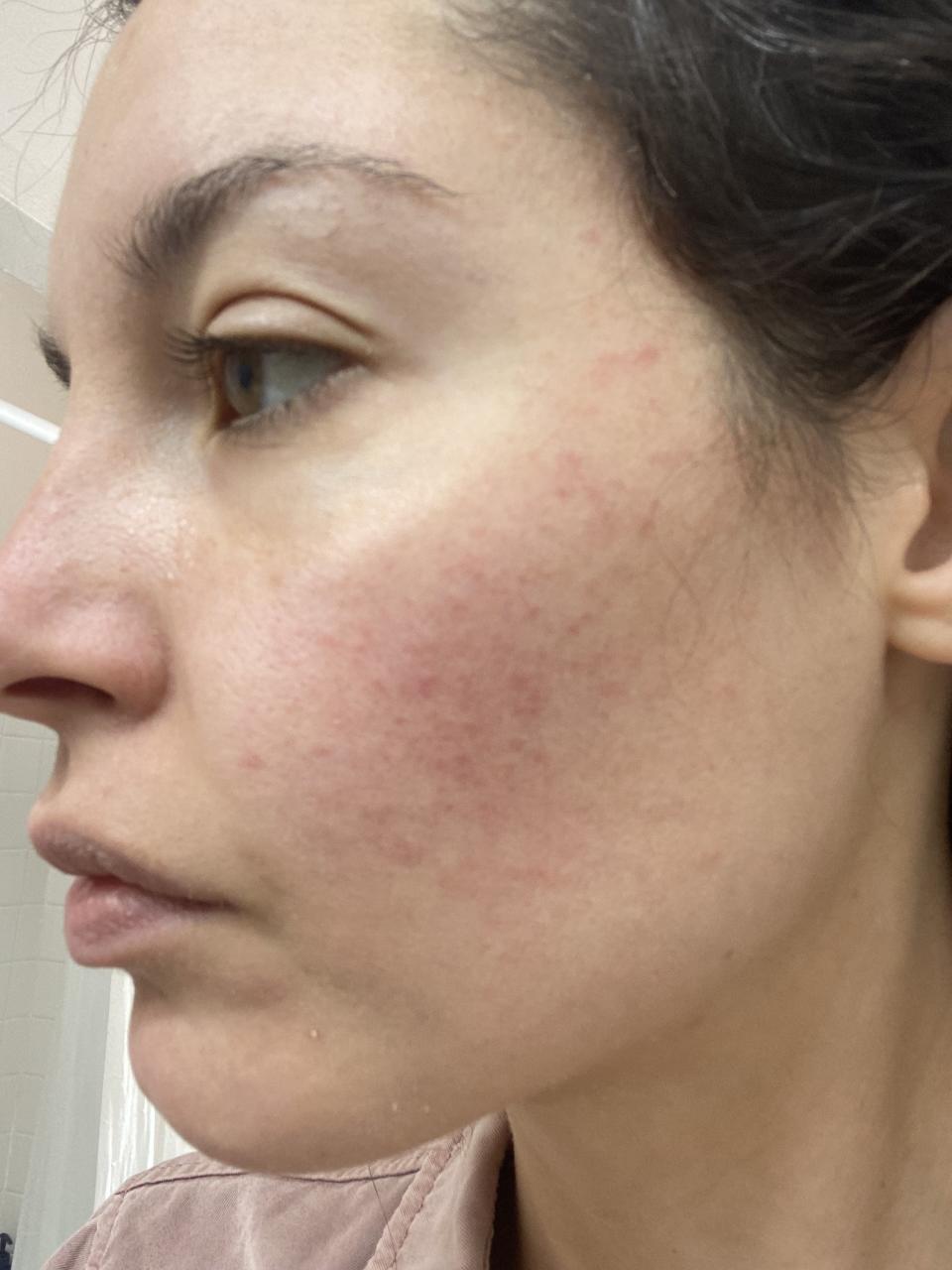
These bumps felt very different from acne, so I knew that wasn't what it was, and I didn't think it was an allergic reaction to the prescription because, as I said above, the bumps weren't in areas where I had applied the cream.
I had been able to mask the hyperpigmentation with makeup, but because the bumps were visible with foundation as you can see in the pic below — it was personally upsetting, and I was feeling very defeated (and exhausted). I was mostly mad at myself because I was realizing how good my skin actually was prior to me trying to make it more youthful and "perfect" with laser treatment.
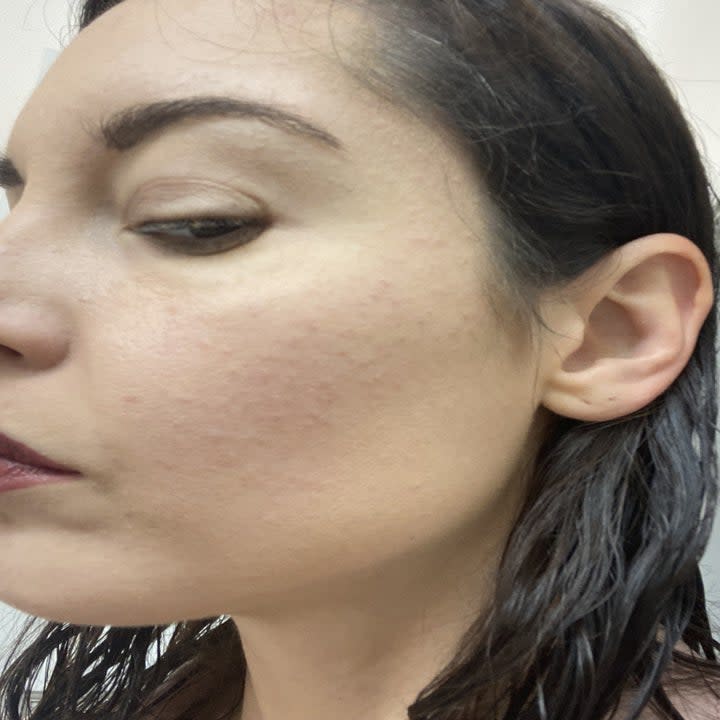
PLEASE NOTE: I am aware that what I was experiencing was minuscule in comparison to the multitude of skin conditions others face, but it was something very new for me.
A reality in today's society is that sometimes you have to get more than one opinion and shop around until you find a doctor that is right for you. So, that's what I did. I want to preface this by saying that, because of my job, I have access to some of the best experts in the industry. I am fully aware of my privilege and so grateful that I was able to connect with top-rated Beverly Hills dermatologist Dr. Ava Shamban.
After meeting with her, she informed me that what I had developed was rosacea. Luckily, it was a very mild form, but she confirmed that — in addition to hyperpigmentation — CO2 lasers can cause an immune response that triggers rosacea to manifest.
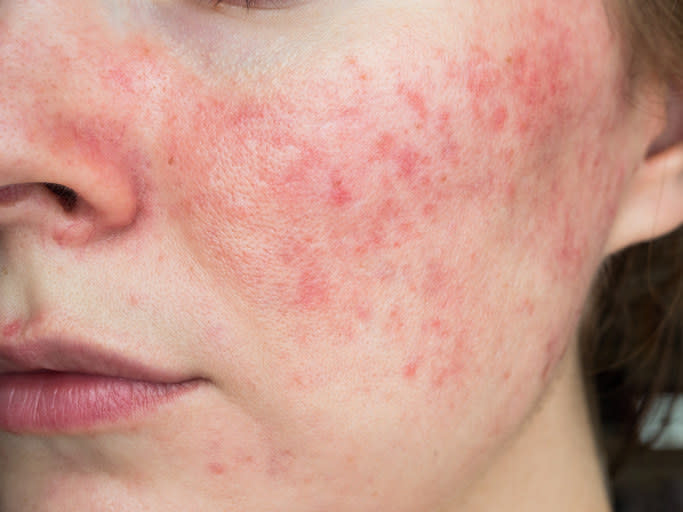
The above photo is not me — it is a stock image of what traditional rosacea can look like.
Now, in severe cases of ongoing rosacea, laser technology may be beneficial. In my case, Dr. Shamban believed I could be successfully treated with the right topical agents (plus, with my recent laser experience, I was not ready to do it again). Here is what she gave me:
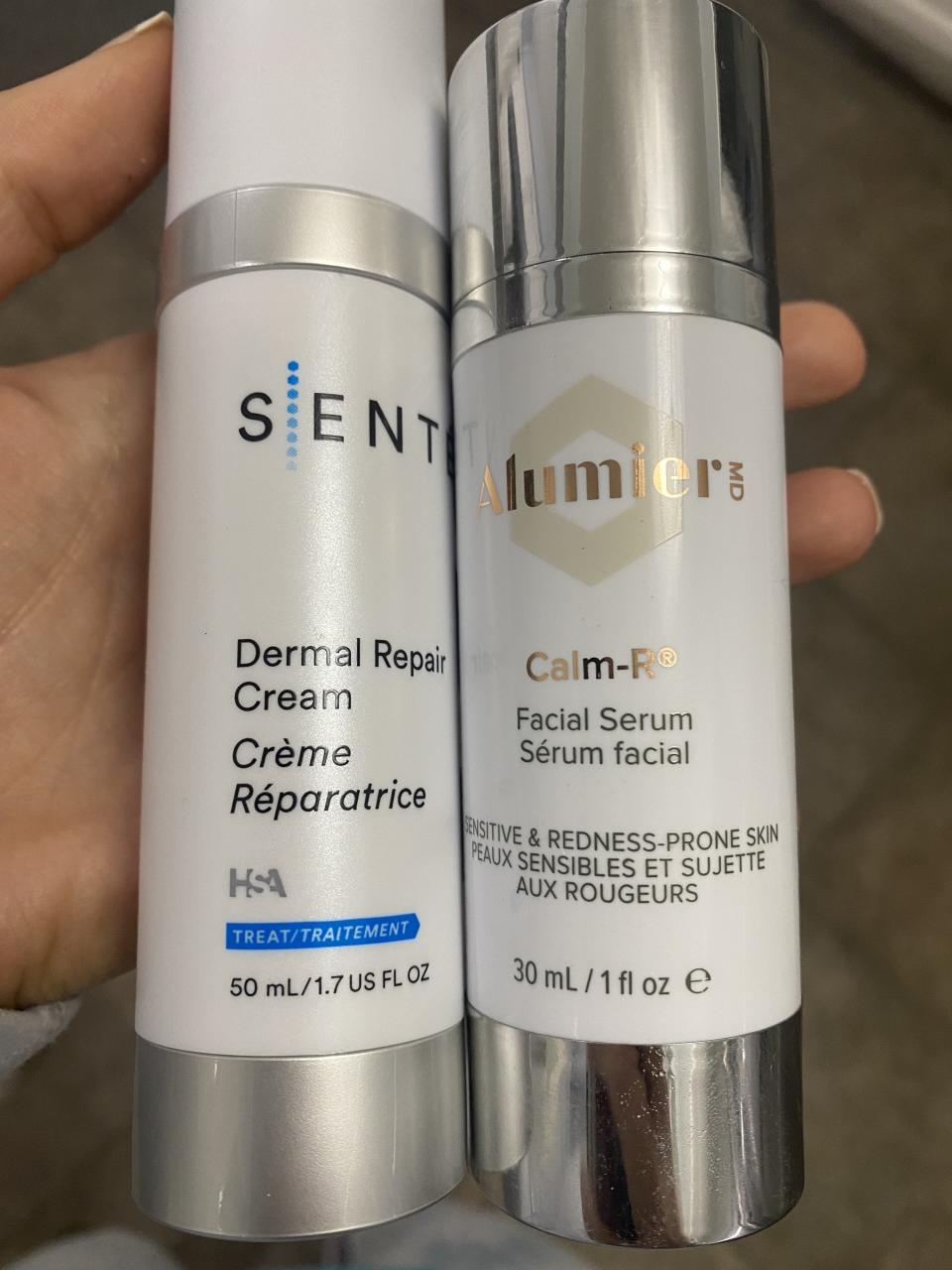
Pictured above is Dermal Repair Cream and Calm-R Facial Serum to help calm the redness caused by the rosacea.
Note: Dr. Shamban provided me with these products free of charge. You do not need a prescription to get them, but they are only available at medical spas such as hers.
Unfortunately, the Dermal Repair Cream caused me to get cystic-like bumps, and I immediately stopped using it. Dr. Shamban then prescribed me azelaic acid — a topical cream that has anti-inflammatory properties — but it also caused more bumps/irritation. So, I stopped using that as well.
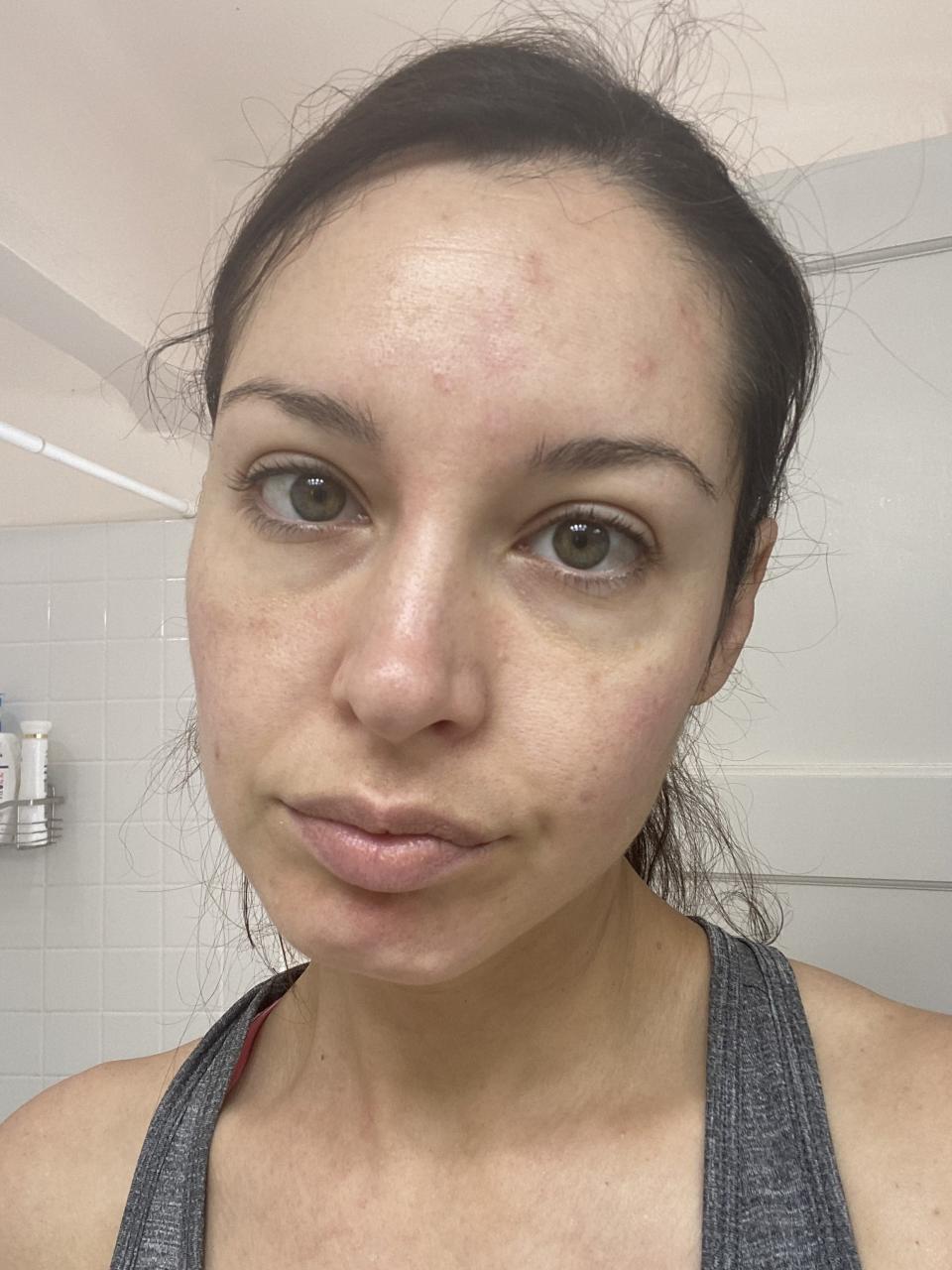
(The azelaic acid prescription wasn't cheap since it was considered a non-formulary by my insurance, so I was REALLY bummed about that.)
And I was back to the drawing board, lol. I started a new cleanser — EltaMD Foaming Facial Cleanser — and a topical metronidazole prescription that was prescribed through a dermatologist from my medical insurance.
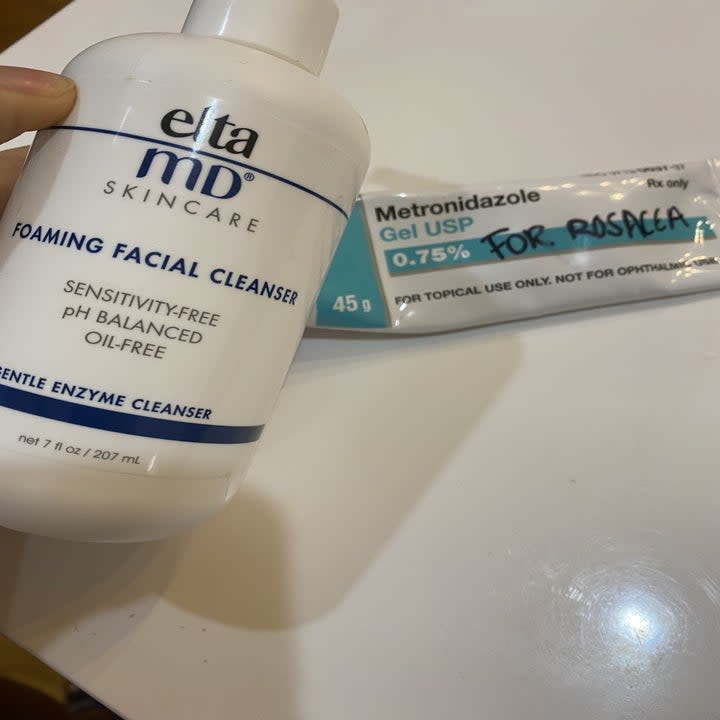
(I also continued using the Calm-R facial serum since my skin didn't negatively react to that.)
This new regimen has kept things "under control" for about a month — meaning my skin hasn't had a reaction, which is good, but it really isn't making things better as of yet. Dr. Shamban told me that, at this point, I may just have to wait for things to subside. She said she is confident my skin will eventually heal itself, but since it has been four months at this point, I am just accepting that this is how my skin is now. (Again, I had the laser treatment done in January for reference.)
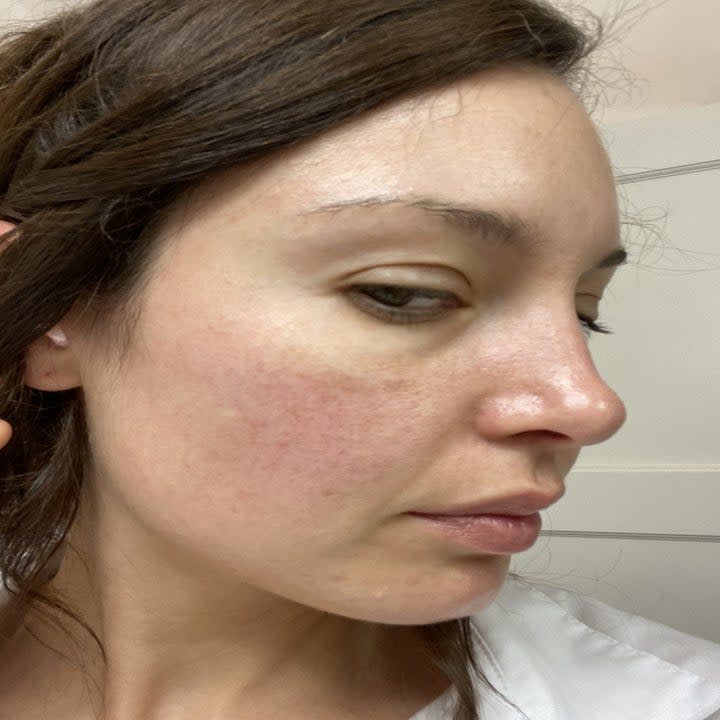
Dr. Shamban offered me to try another prescription called Soolantra — a different topical agent that helps rosacea — so that may be next on the agenda.
AGAIN, I know I am lucky that what happened to me is very mild and with makeup/good ring lights, it's not noticeable.
So, why did I write this article? There are several reasons, but as lasers and chemical peels become more popular, I mainly wanted to share my experience to help educate others on the risks involved before undergoing these procedures. And I am not a standalone case — this woman's nightmare of getting a facial laser treatment is all the proof you need.
Looking back now, I do believe it is important to ONLY get treatment from a place you have vetted and trust. I got my treatment at a credible business, but looking back, there were some things that made me a bit uncomfortable that I probably wouldn't overlook knowing what I know now (for example, the aesthetician had me hold a mirror up to my face and basically told me everything that was wrong with it and where I needed fillers and botox).
Also, I want to share what DID work for me in terms of battling this mild rosacea/hyperpigmentation. I LOVE the EltaMD cleanser. It gets super foamy, and I just love how it makes my skin feel afterward — it's more costly ($30.50) than the Cetaphil cleanser but worth it IMO. The Calm-R I feel has been able to reduce some of the redness, so I would also recommend that.
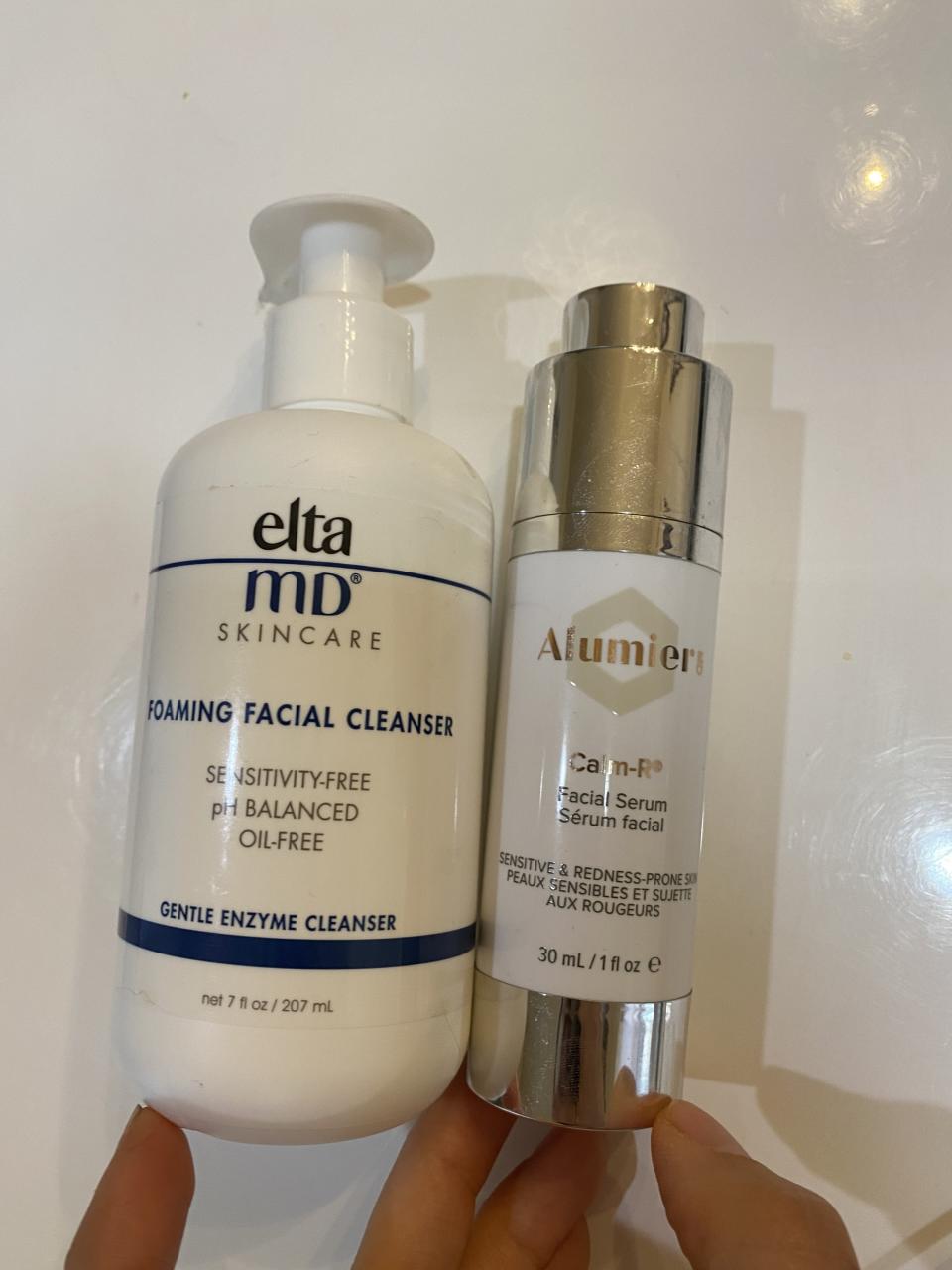
When it comes to prescriptions, the metronidazole has been helping with the bumps, but Dr. Shamban did suggest I ask my other dermatologist to up the prescription to 1%. The hydroquinone works, but it also started making the hyperpigmentation worse in some areas, so that is one I would say use with EXTREME caution.
(Obviously, ask your dermatologist because we are all unique and what worked for me may not be suitable for you.)
Lastly, I want to encourage everyone to be nicer to themselves. I now have a newfound appreciation for my skin, and I am learning to accept myself as I creep closer and closer to 40 every day 😜.
TNT
***I don't want this to scare anyone away from getting laser treatments!!! What I experienced IS rare, and lasers can be VERY beneficial. In fact, my good friend had a laser treatment to minimize her sunspots, and it worked wonders for her. So, my final advice is to find a dermatologist you trust and confide in them before undergoing any sort of skin procedure.***

